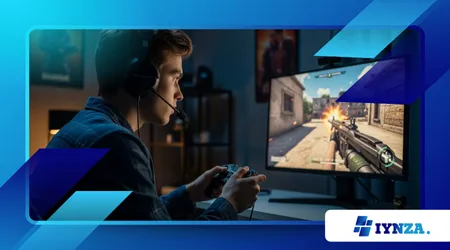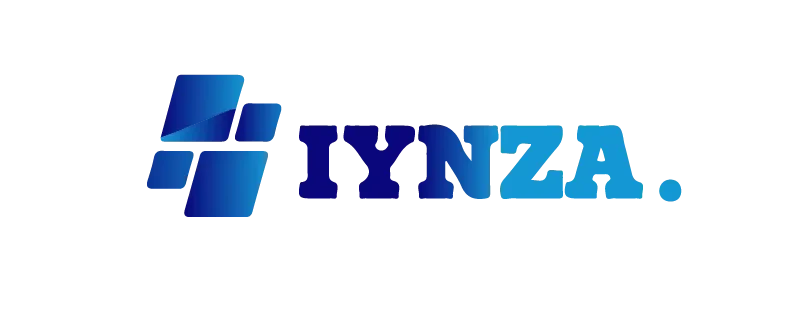How to Improve Your Aim Without Losing Accuracy

Improve Your Aim Without Losing Accuracy this isn’t just a gaming mantra; it’s the fundamental challenge in competitive shooters.
Anúncios
Many players mistakenly equate speed with skill, frantically moving their crosshairs only to sacrifice the precision that truly wins gunfights.
Elite performance is an elegant balance, a symphony of rapid crosshair placement followed by a confident, precise click.
In the rapidly evolving landscape of esports, where milliseconds determine victory, refined aim is the non-negotiable bedrock of success.
We will explore the deliberate, structured methodologies used by professionals to cultivate faster movements without degrading the critical factor: hitting the target.
Anúncios
This journey requires mental discipline, the right gear, and a strategic approach to practice that transcends simple repetition.
Why Is the Speed-Accuracy Balance Difficult to Achieve?
The human brain naturally trades speed for safety it’s an evolutionary instinct.
When moving quickly, the motor cortex prioritizes swift action, which inherently reduces the time available for visual processing and fine-motor corrections.
This is why attempting to speed up your mouse movements often results in a flurry of missed shots.
The true difficulty lies in re-training your muscle memory to execute fast movements with the meticulous planning usually reserved for slow, deliberate actions.
It requires a specific type of training that isolates and then integrates these two opposing forces. You must consciously deconstruct the shot process, focusing on the quality of the movement before layering on velocity.
++ How to Manage Inventory Efficiently in Survival Games
What is the “Fitts’ Law” Analogy in Aim Training?
The movement of a mouse in an FPS game perfectly illustrates Fitts’ Law, a principle from human-computer interaction.
It essentially states that the time required to move to a target is proportional to the distance to the target and inversely proportional to the size of the target.
In practice, this means hitting a small, distant target takes more time and precision than hitting a large, close one. The goal is to shrink the time component by increasing the efficiency of the mouse path.
Imagine your aim is like a golfer’s swing; you need explosive power (speed) but also precise contact (accuracy). A wild swing might be fast, but it rarely hits the ball cleanly.
Also read: How to Level Up Faster in Open-World RPGs
How Does Sensitivity Affect Your Pursuit to Improve Your Aim Without Losing Accuracy?
Choosing the right mouse sensitivity (DPI $\times$ In-Game Sensitivity $=$ eDPI) is the first foundational step.
A sensitivity that is too high promotes speed but makes micro-adjustments impossible, sacrificing accuracy.
Conversely, very low sensitivity maximizes accuracy but severely restricts necessary turning speed.
Most top-tier FPS professionals converge on a moderate-to-low eDPI, typically resulting in a full 360-degree turn requiring between 30 and 60 centimeters of mouse pad space.
This range balances the requirement for swift movement across the screen (flicks) with the control needed for smooth tracking.
Use an online calculator to convert sensitivity across games, ensuring consistency is the priority, regardless of the specific title.

What are the Essential Techniques for Enhanced Aim?
To genuinely Improve Your Aim Without Losing Accuracy, you must move beyond simply playing the game more often.
The most effective techniques involve deliberate practice using specialized aim trainers, focusing on isolating specific movement types before combining them.
This isolated training creates strong, focused motor pathways, which are then integrated back into the complex decision-making of the actual game.
Think of it as developing specific muscles in the gym before applying that strength to a sport.
Read more: Top Controller Settings for Competitive FPS Players
How Does “Flick” Training Differ from “Tracking” Practice?
Flick aiming involves rapidly moving the crosshair a great distance to a stationary or suddenly appearing target, common in games like Valorant or CS2. The focus here is on explosive, one-time movements and stopping on a dime.
Tracking, conversely, is the art of maintaining your crosshair directly on a moving target, essential in games like Apex Legends or Overwatch.
This requires constant, minute adjustments and smooth mouse control. Both skills require dedicated, separate training to maximize their efficiency without degrading one another.
Why is Deliberate Repetition Superior to Simple Playtime?
Simple playtime reinforces both good and bad habits indiscriminately. Deliberate practice, using aim trainers like KovaaK’s or Aim Lab, focuses on maximizing the quality of each movement.
You are not just aiming; you are focused on the perfect mouse stop or the smoothest micro-adjustment.
A 2024 study on aim trainers confirmed that focused, structured training reliably increases shooting proficiency, showing significant improvements in accuracy and hits per second for participants using Macro Flicking tasks (Source: Frontiers in Sports and Active Living, 2024).
This structured approach builds superior muscle memory faster.
The ‘Over-Flick and Reset’ Drill
To build control into your speed, intentionally overshoot the target during flick training, then execute an immediate, small, precise correction to land the crosshair on the target.
This teaches your hand the muscle tension and control required to decelerate and stabilize quickly, preventing the common issue of uncontrolled movement after the fast flick.
You are forcing the fast movement to have a slow, accurate conclusion.
Which Training Structures Promote Controlled Speed?
Training structures must progressively introduce speed while maintaining a high accuracy requirement.
If your accuracy drops significantly during a faster drill, you must immediately return to a slower, more controlled version. Speed without control is chaos; control with measured speed is mastery.
The best training regiments often employ a system known as block periodization, which dedicates several weeks to focusing on one specific type of aim (e.g., speed, then smoothness, then precision) before entering a performance phase.
This methodical focus ensures no fundamental skill is neglected.
What Role Does Reaction Time Play in Aim Improvement?
Reaction time, the interval between a visual stimulus and the initiation of your response, sets the physical limit on your potential speed.
The average human reaction time is around 250 milliseconds (Source: Human Benchmark Statistics). While this is biologically limited, training improves your aim reaction time the delay between the visual cue and the crosshair actually moving to the target.
Aim trainers often measure this delay. Consistently training your reaction to visual cues, paired with immediate, controlled mouse movement, minimizes the gap between seeing the threat and beginning the shot process.
The ‘Sensitivity Shifting’ Technique
Professional trainers sometimes recommend a temporary, brief increase in sensitivity during practice. For a few minutes, use a higher eDPI to feel the difference in required control.
When you return to your preferred, lower sensitivity, the controlled speed will feel much more manageable. It is a mental trick to make your normal speed feel slower and more deliberate.
| Training Focus | Key Metrics to Track | Goal (Maintain) Accuracy |
| Flick Speed | Time to Target (TTT), First Shot Accuracy | $>80\%$ |
| Tracking Smoothness | Tracking Error (Degree), Consistency | Low Error, No Jitter |
| Micro-Adjustments | Small Target Hit Rate, Flick Correction Time | $>95\%$ |
Conclusion: The Path to Masterful Precision
Mastering How to Improve Your Aim Without Losing Accuracy is a journey of deliberate, structured practice and mental control.
It is a calculated compromise between the raw speed your hand can generate and the precision your eye and brain can demand.
By understanding the principles of Fitts’ Law, optimizing your sensitivity, and employing specialized drills like the “Over-Flick and Reset,” you shift the focus from wild movement to controlled, explosive precision.
Elite aim isn’t about moving the fastest; it’s about making the right movement at the right speed, every single time.
It’s about training your hand to deliver what your brain promises. Now, take these techniques into your next training session.
What specific drill will you try first to integrate speed and precision into your own muscle memory? Share your experience in the comments below!
Frequently Asked Questions
How often should I use an aim trainer, and for how long?
Consistency is key. Aim for 15-30 minutes of dedicated aim training every day, or at least 5 times a week, before jumping into your main game. This duration is long enough to build new motor pathways without causing excessive fatigue.
Is there a perfect mouse DPI or eDPI setting?
There is no “perfect” setting. The most important factor is consistency and finding an eDPI that allows you to comfortably execute a 180-degree turn without lifting your mouse.
Most professionals use an eDPI between 2,500 and 4,500, but use a sensitivity converter to find the range that feels most comfortable for you.
Will improving my aim in one game automatically transfer to another?
Fundamental motor control and mouse technique (flicking, tracking) will transfer strongly.
However, the game-specific mechanics like weapon recoil patterns, crosshair placement relative to the game’s environment, and movement penalties still require practice in the new game. Always use a sensitivity converter to ensure your eDPI is identical across games.
Why do I lose accuracy when I start aiming faster?
This phenomenon occurs because you are bypassing your brain’s final adjustment and stabilization phase.
When you increase speed without controlled deceleration, your hand “throws” the crosshair past the target. Focused training on the stopping motion, like the “Over-Flick and Reset” drill, is the solution.
What should I do if I hit a plateau in my aim improvement?
A plateau is often a sign that your training routine has become too comfortable.
When you reach a plateau, change your training: focus entirely on a different type of aim (switch from flicking to tracking for a week), try a temporarily faster sensitivity, or reduce your practice time and focus more on VOD review and in-game decision-making.
